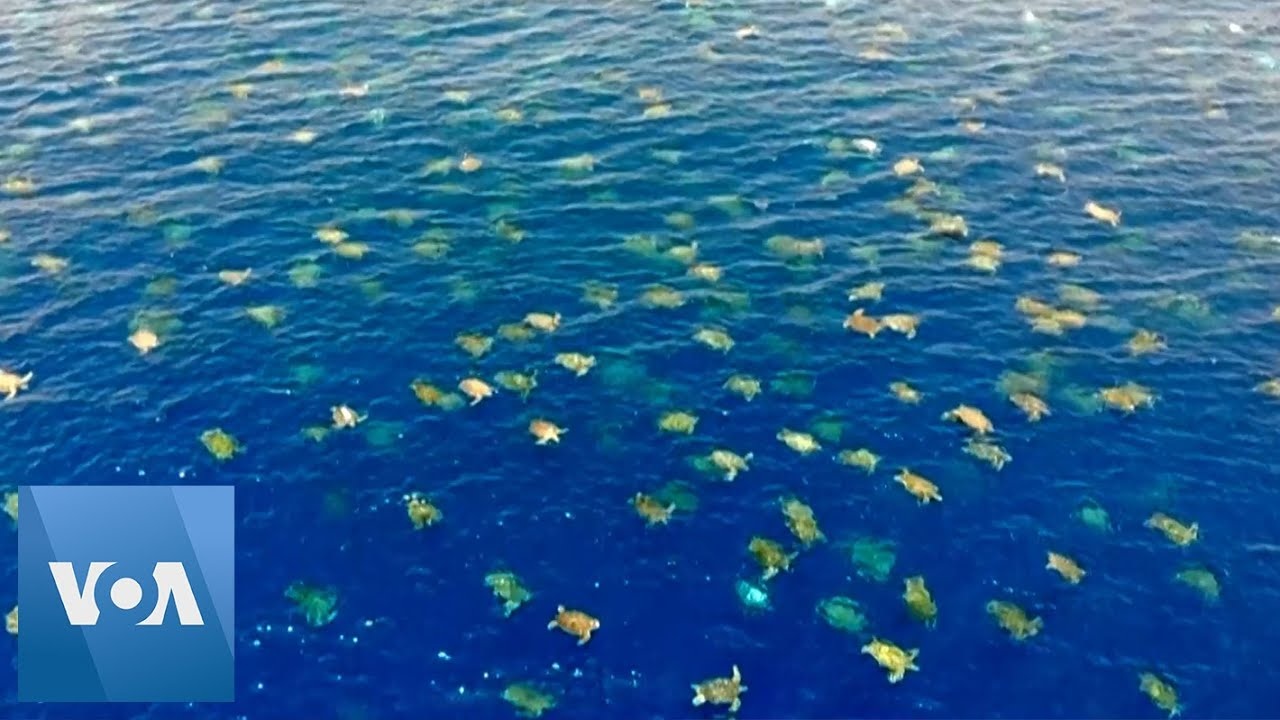
Amazing Drone Footage Captures Thousands of Turtles Migrating Near Great Barrier Reef

Australian researchers captured a stunning scene that looks like something out of Finding Nemo. The drone the scientists used recorded approximately 64,000 green turtles migrating near Australia’s Great Barrier Reef for nesting season, as CNN reported.
The footage from the Queensland Government’s Department of Environment and Science (DES) spotted the turtles congregating at the world’s largest green turtle rookery at Raine Island, a vegetated coral cay approximately 385 miles northwest of Cairns in Queensland, according to CNN.
The sheer number of turtles surprised the scientists who realized they had underestimated the number of green turtles in the area by 50 percent, according to Voice of America’s YouTube post showing the footage.
“We were underestimating that a lot. We’re finding 1.73 times as many turtles with the drone … when we directly compare with the observer counts,” Dr. Andrew Dunstan, from the DES, told CNN Tuesday, adding that the team can now go back and adjust historic population estimates.
Prior to using drones, researchers would count turtles as they landed on the beach to lay eggs. They would then mark the turtles with a non-toxic paint to track them in the ocean. However, accurately counting thousands of painted and unpainted turtles from a boat in the water proved difficult and unreliable, according to the Voice of America post.
Using a drone is easier, safer, much more accurate, and the data can be immediately and permanently stored,” Dunstan, senior research scientist and lead author of a paper about the turtles published in PLOS ONE on Thursday, said in a statement, as CNN reported.
“What previously took a number of researchers a long time can now be by one drone operator in under an hour,” said researcher Richard Fitzpatrick from the Biopixel Oceans Foundation, as Prevention reported.
Green sea turtles are a vulnerable species in Queensland since they are hunted for their flesh and eggs, are often trapped in trawler fishing nets, and choke on discarded plastic bags, according to the Sydney Morning Herald. Eleven species of green turtles are listed as either endangered or threatened in the Endangered Species Act in the U.S.
“We sort of became aware that although there’s these massive aggregations, the actual reproduction isn’t working so well,” said Dunstan to CNN, explaining that his team noticed turtles were falling off cliffs, becoming trapped in the heat and suffering flooding in their nests.
In their statement, as Prevention noted, the DES said they’re “taking action to improve and rebuild the island’s nesting beaches and building fences to prevent turtle deaths, all working to strengthen the island’s resilience and ensure the survival of our northern green turtles and many other species.”
- Oceans Can Recover by 2050, Study Shows
- 9 Super Cool Facts About Sea Turtles - EcoWatch
- Sea Turtles Often Get Lost for Miles, but Always Find Their Destination - EcoWatch
- Illegal Drone in Wetlands Forces Adult Terns to Abandon 2,000 Eggs

 233k
233k  41k
41k  Subscribe
Subscribe 